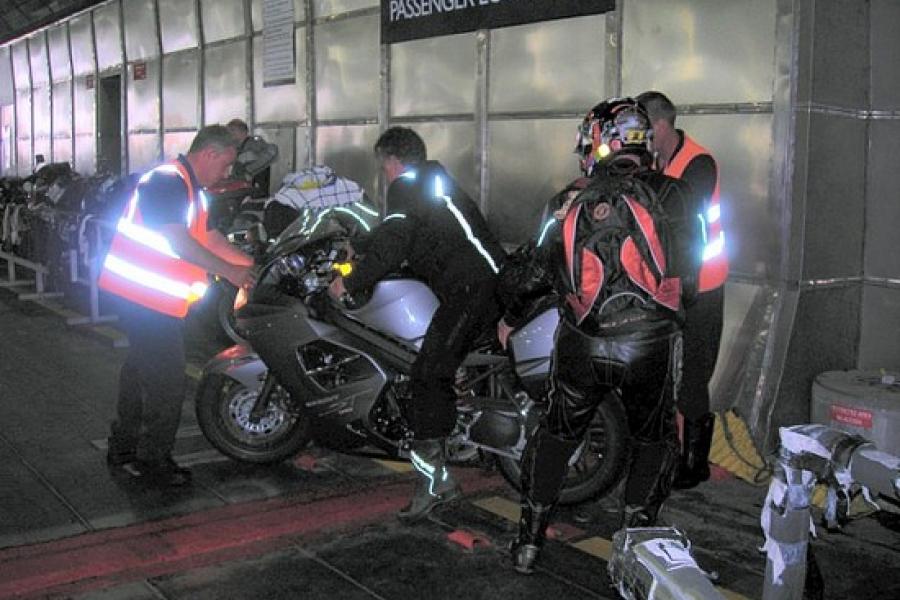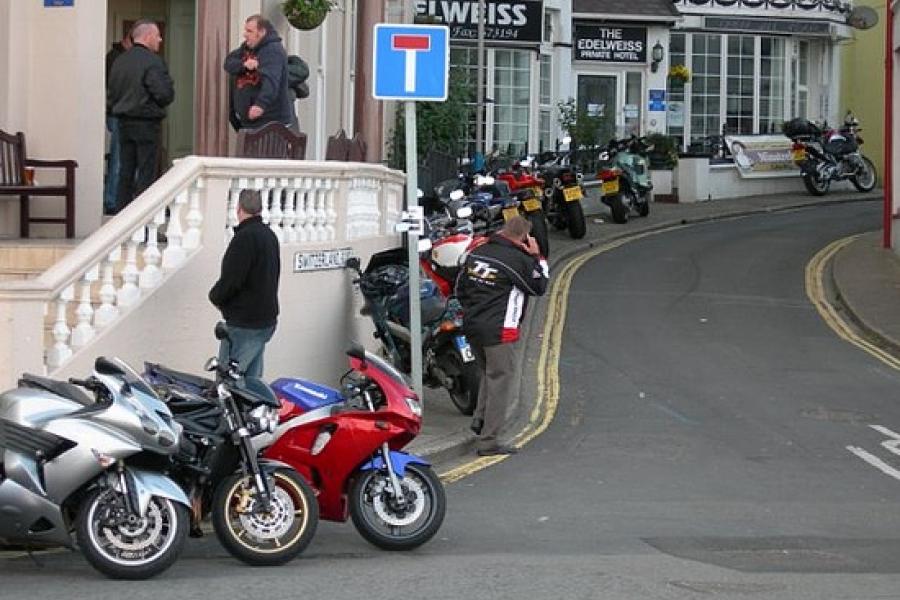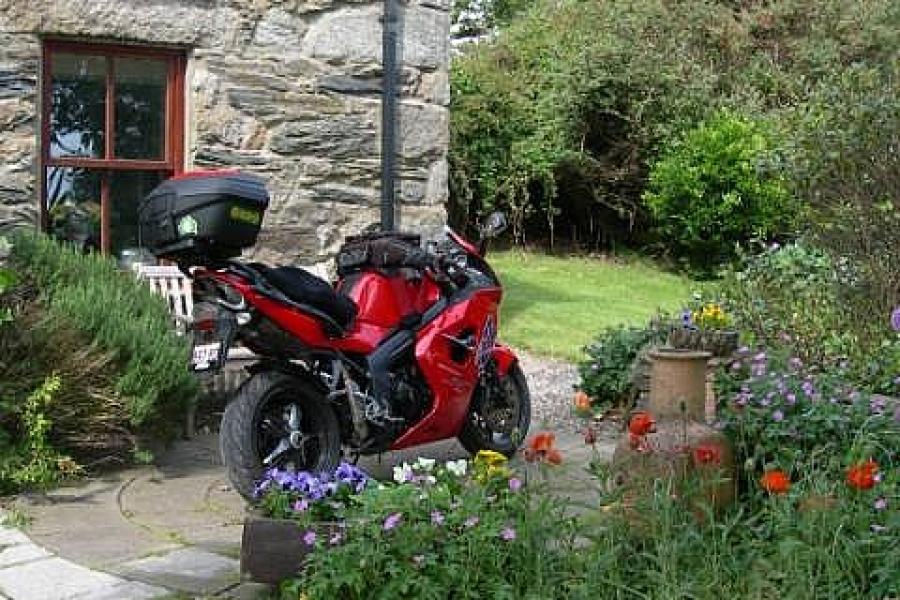Not the Island, THE Island! (This blog was originally posted 12 June 2011 on Travelpod)
Country
Our hotel room overlooking Douglas Bay was pleasant, large and full of late afternoon sun. While Jo unpacked and checked emails, I opened a window and lent out to look down the promenade, along the line of hotels and guest houses and on to the centre of town a few hundred metres away. I knelt on the floor, leaning out of the low window, too excited to do anything useful. The sight amazed me. There were bikes everywhere; bikes parked in every available space; bikes so thick that pedestrians had to wait minutes for a break in the flow to cross the road; some said there were 10,000 bikes on the island for the TT. We finished unpacking and rushed out into the evening as quickly as we could.
We tried to walk briskly into the town centre but it was slow progress with the narrow footpath crowded with bikes of every type, and with them, every type of rider. Sports bike riders in race leathers, complete with fairing hump on the back, ate dinner in the cafes. Adventure bike riders in their distinctive two piece riding suits ambled along enjoying the evening. Couples young and old and dressed in matching leathers strolled home from dinner. Groups of old-boys who had come to the island for twenty years sat on the steps of their hotels drinking beer and telling tales of street racing past. Young guns crowded the pub bars drinking and shouting over rock bands. A few hundred kilometres away in England, France, Germany or Poland they wore suits, or corporate uniforms, or a tradesman's drill. Here every one was equal in riding gear and heavy boots. Here everyone got the joke and you could start a conversation with a stranger with no more than a smile and a nod.
Douglas seemed like a nice little town. A seaside resort, a little seedy with its fun-fair, casino and hotels past their prime, it tapered out from the port around the bay with suburban roots burrowing back into the low hills. Fish and chip shops along the front did a roaring trade and a few better bistros around the small marina were all packed. By the time we had looked around and wandered back to our hotel we both had a very good feeling about the place indeed. This was in spite of not finding anywhere open to get a sit-down meal. It seemed that the pubs stopped serving food at 9:00 pm and the restaurants took their last orders at about the same time.
Of course, all of the bikers don't come to Douglas every year for the ambiance. They come for the TT and, as we were about to find out, the TT is much more than a motorcycle race. 2011 was the 100th year of racing on the Isle of Man Mountain Circuit and it is the 37¾ miles of public roads that make up that circuit that have given the TT its character. Modern racing circuits, like Philip Island, Eastern Creek or Queensland Raceway, are only a few kilometres in length. They are designed for racing. They have smooth bitumen surfaces, wide run-off areas on the corners and are free of obstacles that might injure a fallen rider. The riders practise the perfect line through the corners and try to repeat that for every short lap. A race is generally complete in about 100 kilometres, well inside an hour and on a single tank of fuel.
On our first day we met our friends Greg, Kerry and Chris and rode around the circuit to confirm that the Island is not like that at all. The Mountain Circuit has the indifferent surface of most public roads. It sweeps through villages and tree covered narrow lanes flanked by stone walls and hedgerows and climbs from sea level to more than 600 metres altitude. As we rode I looked at the circuit from a rider's perspective. There are few sharp corners to slow the pace so a rider can be on the throttle much of the time pushing the speeds higher. The buildings, walls, trees and fences that are part of the normal environment at touring speeds become altogether more sinister at racing speeds. The light is dappled through the glens and either bright sunshine or deep shadow through the farms and villages and often fog on the mountain. It is very fast and very unforgiving.
To add to the misery, the circuit being 37 ¾ miles can have vastly different weather on different sections at the same time. There is also very limited practice time available because of the need to close public roads. As a consequence, riders take years to learn the best corner lines. All of this makes the TT extremely dangerous and more than 260 riders have died racing on the mountain. Three died during the time we were there.
But, it is not only the racers who die on the island. Ordinary riders, visiting for TT week, regularly get their skills and their ambition confused and come to grief. The day of our first ride around the mountain course, our friends Greg and Kerry stopped at a service station and were a few minutes behind us. By the time they reached the mountain section of the circuit the police had closed the one way road. Four bikes were down. Two riders were dead and two were seriously injured. The “incident” must have happened only a few minutes behind us. Later that day, Greg and Kerry told us they had been on the island for a week and were yet to ride the mountain section of the course as it has been closed because of “incidents” every day.
It was our first day on the island and the start of racing was still three days away. News of the deaths left us with a lot to think about over our wine back in Douglas... to be continued.





















